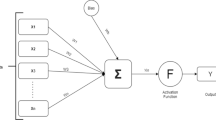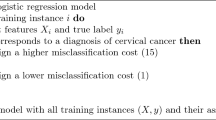Abstract
The demand for healthcare workers and infrastructure from an alarmingly growing patient population may contribute to the increased Length of Stay (LOS) in Hospital and Mortality rate. The shortage of doctors, nurses, and hospital beds may be blamed for this increase. As Constant patient monitoring is essential and the better hospital management and administration are necessary, therefore this research aimed foremost, to develop a machine learning model to predict long-term outcomes like Length of Stay (LOS), mortality rate of a patient admitted into the hospital. We used Machine Learning (ML) in the National Hospital Care Research Database (NHCRD) to create minimum feature-based predictive modeling with adequate performance. Unlike other approaches, ours requires the patient’s profile, tests reports at the time of admission and treatment history to accurately predict outcomes like the length of stay and mortality rate, making our technique novel with 98% accuracy, 98% precision, 95% AUROC Score, 94% F1 Score, 0.97 Recall, 0.95 Train Accuracy, and 0.90 Test Accuracy with the Support Vector Machine Algorithm. The ratio of training data to testing data was divided in the ratio 8:2 then the Machine Learning methods were applied. Descriptive statistical graphs, feature significance, precision-recall curve, accuracy plots, and Area Under the Curve (AUC), Accuracy, Precision, Recall, F1-Score, Mean Squared Error, Mean Absolute Error and Root Mean Squared Error were used to evaluate different machine learning methods like Random Forests (RF), Logistic Regression (LR), Gradient Boosting (GB), Decision Tree (DT), Naive Bayes (NB), Artificial Neural Network (ANN), and Ensemble Learning Techniques (EL), etc. Adopting the proposed framework, which considers the imbalanced dataset for classification-based methods based on electronic healthcare records, may allow us to apply Machine Learning to forecast patient length of stay and mortality rate in the hospital’s clinical information system. This Prediction Model will help hospitals and healthcare professionals better manage these resources and save lives by proving the utility of ML algorithms in aiding with data-driven decision-making and allowing early treatments, resource planning and finances.
































Similar content being viewed by others
References
Alghatani K, Ammar N, Rezgui A, Shaban-Nejad A (2021) Predicting intensive care unit length of stay and mortality using patient vital signs: machine learning model development and validation. JMIR Med Inform 9(5):e21347
Alsinglawi B, Alshari O, Alorjani M, Mubin O, Alnajjar F, Novoa M, Darwish O (2022) An explainable machine learning framework for lung cancer hospital length of stay prediction. Sci Rep 12(1):607. https://doi.org/10.1038/s41598-021-04608-7
Alsinglawi B, Alshari O, Alorjani M et al (2022) An explainable machine learning framework for lung cancer hospital length of stay prediction. Sci Rep 12:607. https://doi.org/10.1038/s41598-021-04608-7
Anan K, Kawamura K, Suga M, Ichikado K (2018) Clinical differences between pulmonary and extrapulmonary acute respiratory distress syndrome: a retrospective cohort study of prospectively collected data in Japan. J Thorac Dis 10:5796–5803
Bacchi S, Gluck S, Tan Y, Chim I, Cheng J et al (2020) Prediction of general medical admission length of stay with natural language processing and deep learning: a pilot study. Intern Emerg Med 15(6):989–995
Baek H, Cho M, Kim S, Hwang H, Song M, Yoo S (2018) Analysis of length of hospital stay using electronic health records: a statistical and data mining approach. PLoS ONE 13:e0195901. https://doi.org/10.1371/journal.pone.0195901
Baek H, Cho M, Kim S, Hwang H, Song M, Yoo S (2018) Analysis of length of hospital stay using electronic health records: a statistical and data mining approach. PLoS ONE 13(4):e0195901. https://doi.org/10.1371/journal.pone.0195901
Bulgarelli L, Deliberato RO, Johnson AEW (2020) Prediction on critically ill patients: the role of “big data”. J Crit Care 60:64–68
Cheng-Chang Y, Adebayo BO, Lung C, Jia-Hung C, Chien-Tai H, Yi-Ting H, Chen-Chih C (2023) Risk factor identification and prediction models for prolonged length of stay in hospital after acute ischemic emergency using artificial neural networks. Front Neurol 14(2023):1664–2295. https://doi.org/10.3389/fneur.2023.1085178 https://www.frontiersin.org/articles/10.3389/fneur.2023.1085178
Chrusciel J, Girardon F, Roquette L et al (2021) The prediction of hospital length of stay using unstructured data. BMC Med Inform Decis Mak 21:351. https://doi.org/10.1186/s12911-021-01722-4
Chuang MT, Hu YH, Lo CL (2018) Predicting the prolonged length of stay of general surgery patients: a supervised learning approach. Int Trans Oper Res 25(1):75–90
Daghistani TA, Elshawi R, Sakr S, Ahmed AM, Thwayee AA et al (2019) Predictors of inhospital length of stay among cardiac patients: a machine learning approach. Int J Cardiol 288:140–147
Delahanty RJ, Kaufman D, Jones SS (2018) Development and evaluation of an automated machine learning algorithm for inhospital mortality risk adjustment among critical care patients. Crit Care Med 46:e481–e488
Maguire PA, Taylor IC, Stout RW (1986) Elderly patients in acute medical wards: factors predicting length of stay in hospital. Br Med J (Clin Res Ed) 292(6530):1251–1253. https://doi.org/10.1136/bmj.292.6530.1251
Gumaei A, Rakhami MA, Rahhal MMA, Albogamy FRH, Maghayreh EA et al (2002) Prediction of COVID-19 confirmed cases using gradient boosting regression method. Comput Mater Contin 66(1):315–329
Guo A, Lu J, Tan H et al (2021) Risk factors on admission associated with hospital length of stay in patients with COVID-19: a retrospective cohort study. Sci Rep 11:7310. https://doi.org/10.1038/s41598-021-86853-4
Gutierrez G (2020) Artificial intelligence in the intensive care unit. Crit Care 24:101
Houthooft R et al (2015) Predictive modelling of survival and length of stay in critically ill patients using sequential organ failure scores. Artif Intell Med 63:191–207
Hughes AH, Horrocks D, Leung C et al (2021) The increasing impact of length of stay “outliers” on length of stay at an urban academic hospital. BMC Health Serv Res 21:940. https://doi.org/10.1186/s12913-021-06972-6
Komorowski M (2019) Artificial intelligence in intensive care: are we there yet? Intensive Care Med 45:1298–1300
Lagoe RJ, Abbott JH, Littau SA (2021) Reducing hospital lengths of stay: a five-year study. Case Reports in Clinical Medicine 10(6):160–167. https://doi.org/10.4236/crcm.2021.106020
Laupland KB, Kirkpatrick AW, Kortbeek JB, Zuege DJ (2006) Long-term mortality outcome associated with prolonged admission to the ICU. Chest 129:954–959
Leong MQ, Lim CW, Lai YF (2021) Comparison of hospital at-home models: a systematic review of reviews. BMJ Open 11:e043285. https://doi.org/10.1136/bmjopen-2020-04328
Lisk R, Uddin M, Parbhoo A et al (2019) Predictive model of length of stay in hospital among older patients. Aging Clin Exp Res 31:993–999. https://doi.org/10.1007/s40520-018-1033-7
Love BC (2002) Comparing supervised and unsupervised category learning. Psychon Bull Rev 9(4):829–835
Lu J et al (2018) Lactate dehydrogenase is associated with 28-day mortality in patients with sepsis: a retrospective observational study. J Surg Res 228:314–321
Ma X, Si Y, Wang Z, Wang Y (2020) Length of stay prediction for ICU patients using individualized single classification algorithm. Comput Methods Prog Biomed 186:105224
Mamdani M, Slutsky AS (2021) Artificial intelligence in intensive care medicine. Intensive Care Med 47:147–149
Attrill S, White S, Murray J, Hammond S, Doeltgen S (2018) Impact of oropharyngeal dysphagia on healthcare cost and length of stay in hospital: a systematic review. BMC Health Serv Res 18(1):1–18. https://doi.org/10.1186/s12913-018-3376-3
Mekhaldi RN, Caulier P, Chaabane S, Chraibi A, Piechowiak S (2020) Using machine learning models to predict the length of stay in a hospital setting. In: Rocha Á, Adeli H, Reis L, Costanzo S, Orovic I, Moreira F (eds) Trends and innovations in information systems and technologies. WorldCIST 2020. Advances in intelligent systems and computing, vol 1159. Springer, Cham. https://doi.org/10.1007/978-3-030-45688-7_21
Mitchell R, Banks C (2020) Emergency departments and the COVID-19 pandemic: making the most of limited resources. Emerg Med J 37(5):258–259
Möllers T, Stocker H, Wei W, Perna L, Brenner H (2019) Length of hospital stay and dementia: a systematic review of observational studies. Int J Geriatr Psychiatry 34:8–21. https://doi.org/10.1002/gps.4993
Morton A, Marzban E, Giannoulis G, Patel A, Aparasu R et al (2014) A comparison of supervised machine learning techniques for predicting short-term in-hospital length of stay among diabetic patients. In: Int. conf. on machine learning and applications, Detroit, MI, USA, pp 1–5
Nadeem MW, Ghamdi MAA, Hussain M, Khan MA, Khalid KM et al (2020) Brain tumor analysis empowered with deep learning: a review, taxonomy, and future challenges. Brain Sci 10(2):118–134
Mekhaldi RN, Caulier P, Chaabane S, Chraibi A, Piechowiak S (2020) Using machine learning models to predict the length of stay in a hospital setting. In World conference on information systems and technologies. Springer International Publishing, Cham, pp. 202–211. https://doi.org/10.1007/978-3-030-45688-7_21
Patel A, Johnson M, Aparasu R (2013) Predicting in-hospital mortality and hospital length of stay in diabetic patients. Value Health 16(3):A17–A25
Pirracchio R et al (2015) Mortality prediction in intensive care units with the super ICU learner algorithm (SICULA): a populationbased study. Lancet Respir Med 3:42–52
Rongali S et al (2020) Learning latent space representations to predict patient outcomes: model development and validation. J Med Internet Res 22:e16374
Shi T, Horvath S (2006) Unsupervised learning with random forest predictors. J Comput Graph Stat 15:118–138
Shillan D, Sterne JAC, Champneys A, Gibbison B (2019) Use of machine learning to analyse routinely collected intensive care unit data: a systematic review. Crit Care 23:284
Siddique SM, Tipton K, Leas B et al (2021) Interventions to reduce hospital length of stay in high-risk populations: a systematic review. JAMA Netw Open 4(9):e2125846. https://doi.org/10.1001/jamanetworkopen.2021.25846
Sridhar S, Whitaker B, Mouat-Hunter A, McCrory B (2022) Predicting length of stay using machine learning for total joint replacements performed at a rural community hospital. PLoS ONE 17(11):e0277479. https://doi.org/10.1371/journal.pone.0277479
Stone K, Zwiggelaar R, Jones P, Mac Parthaláin N (2022) A systematic review of the prediction of hospital length of stay: towards a unified framework. PLOS Digit Health 1(4):e0000017. https://doi.org/10.1371/journal.pdig.0000017
Tomovic S (2021) Patient length of stay analysis with machine learning algorithms. Comput Sci Inf Syst 18:16–16. https://doi.org/10.2298/CSIS200422016T
Uddin S, Khan A , Hossain ME, Moni MA (2019) Comparing different supervised machine learning algorithms for disease prediction. BMC Med Inform Decis Mak 19(1):1–16
Vengadakrishnan K, Koushik AK (2015) A study of the clinical profile of acute pancreatitis and its correlation with severity indices. Int J Health Sci 9:410–417
Zolbanin HM, Davazdahemami B, Delen D, Zadeh AH (2020) Data analytics for the sustainable use of resources in hospitals: predicting the length of stay for patients with chronic diseases. Inf Manag 13(4):103282–103299
Author information
Authors and Affiliations
Corresponding author
Additional information
Publisher’s note
Springer Nature remains neutral with regard to jurisdictional claims in published maps and institutional affiliations.
Rights and permissions
Springer Nature or its licensor (e.g. a society or other partner) holds exclusive rights to this article under a publishing agreement with the author(s) or other rightsholder(s); author self-archiving of the accepted manuscript version of this article is solely governed by the terms of such publishing agreement and applicable law.
About this article
Cite this article
Bhadouria, A.S., Singh, R.K. Machine learning model for healthcare investments predicting the length of stay in a hospital & mortality rate. Multimed Tools Appl 83, 27121–27191 (2024). https://doi.org/10.1007/s11042-023-16474-8
Received:
Revised:
Accepted:
Published:
Issue Date:
DOI: https://doi.org/10.1007/s11042-023-16474-8




